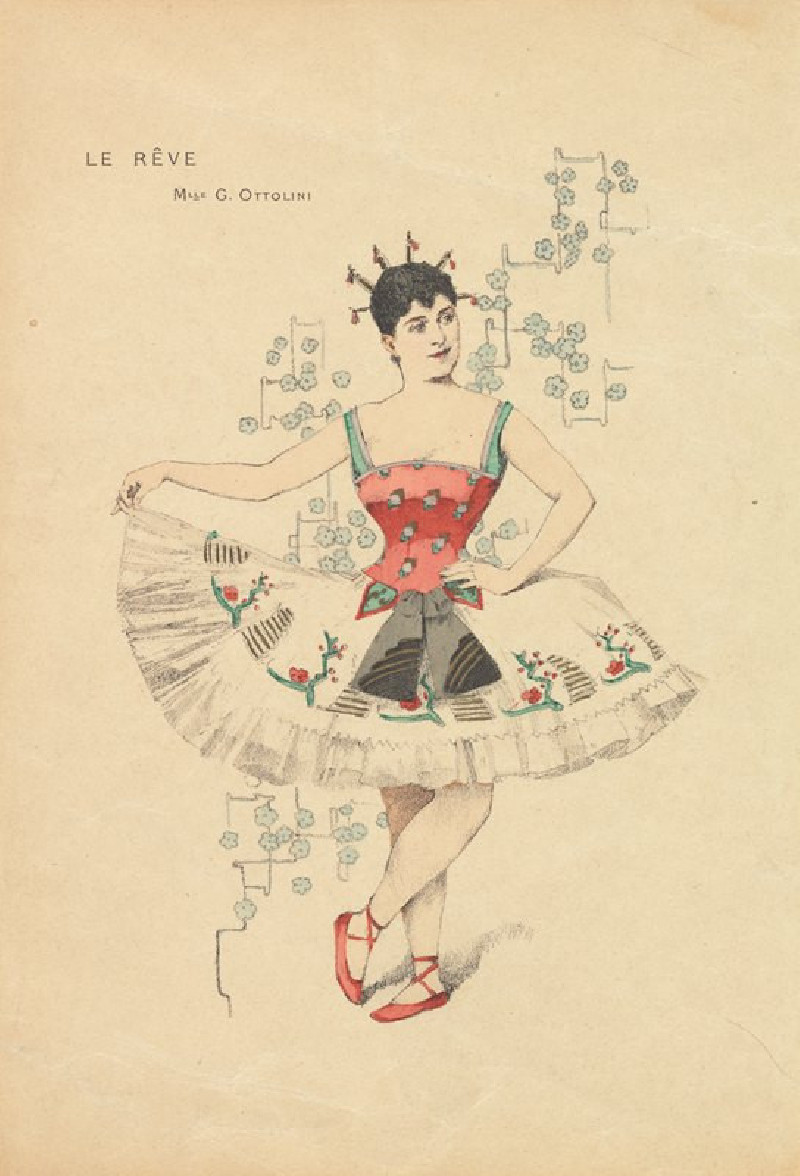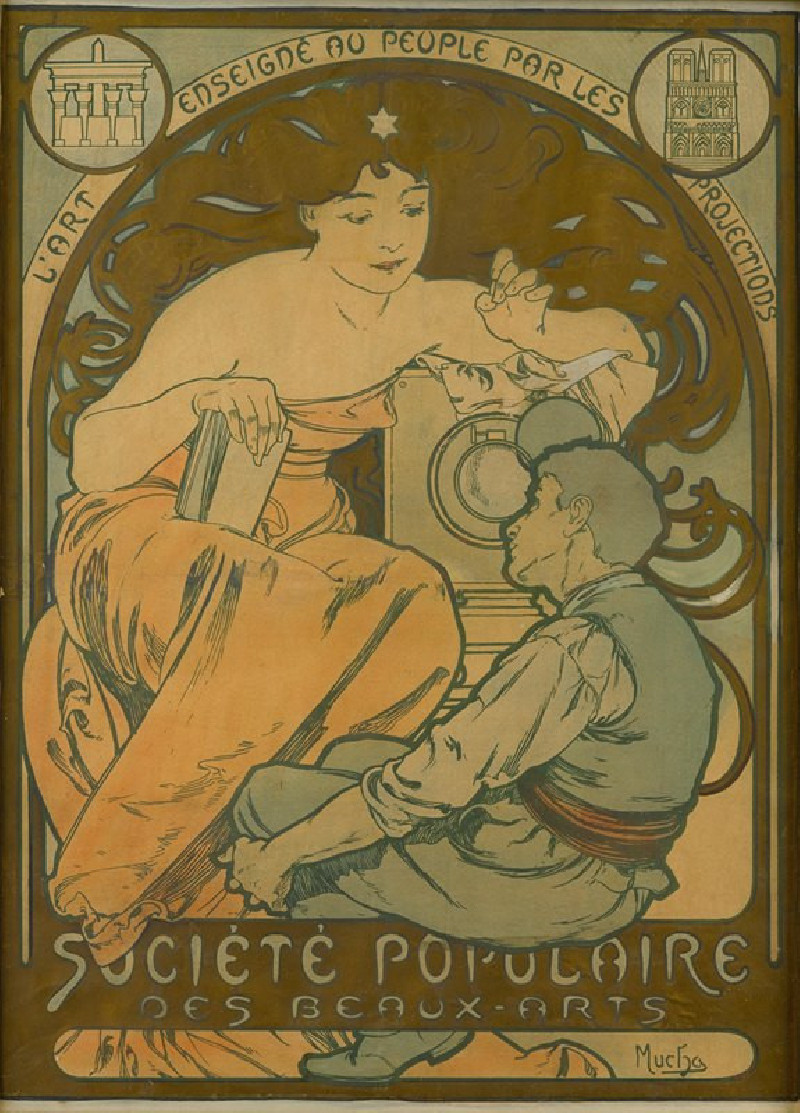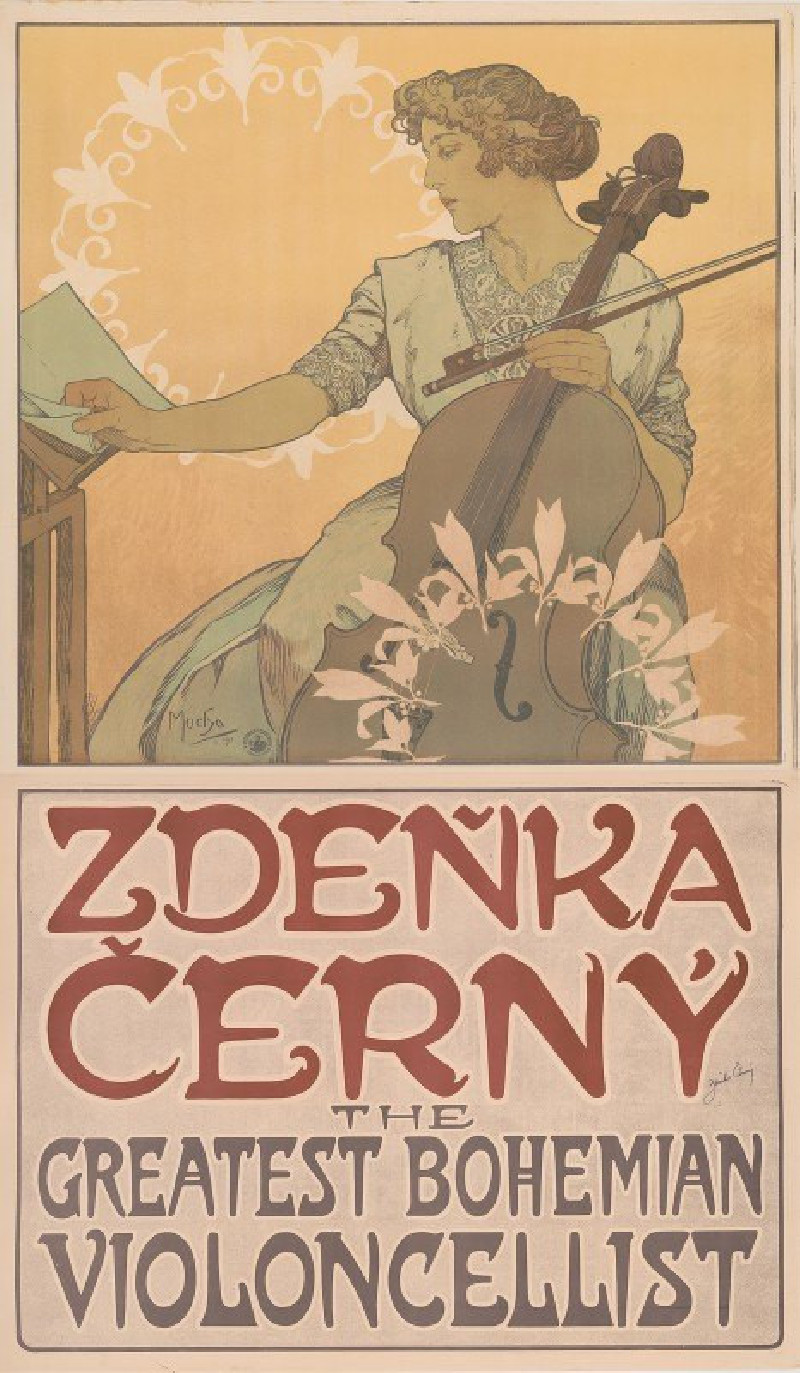Job (1896)
Technique: Giclée quality print
Recommended by our customers
More about this artwork
The painting titled "Job" by Alphonse Mucha, created in 1896, is a stunning example of the Art Nouveau style that the artist is famously known for. In this artwork, you can see an idealized woman with a dreamy, serene expression. Her head is tilted slightly to the side, her eyes gently closed, denoting a sense of peacefulness and perhaps introspection.The woman's hair is elaborately styled and flows luxuriously around her, which is a characteristic feature in Mucha's art. The flowing hair forms intricate, decorative patterns that are harmoniously intertwined with the background and the borders of the composition.The color palette is dominated by soft, muted tones of gold, tan, and olive, accented with touches of red, particularly noticeable in the hair ornamentation which adds a vibrant contrast.One of the most eye-catching aspects of this piece is the elaborate decorative framework that includes the word "JOB" at the top, set in bold, ornamental lettering. This not only references the brand of cigarette papers that the artwork was commissioned to promote but also integrates text and image in a way that is aesthetically pleasing and balanced.The backdrop features stylized motifs and patterns, a hallmark of the Art Nouveau movement, emphasizing natural forms and structures. This integration of the figure with graphic elements makes the artwork feel both organic and stylized, capturing the essence of an era that celebrated the beauty of art in everyday life.
Delivery
Returns
Alphonse Maria Mucha also know internationally as Alphonse Mucha (1860-1939), was a Czech graphic artist, painter and illustrator. He lived in Paris during the Art Nouveau period, and is best know for his noticeably stylized and decorative theatrical posters like those of Sarah Bernhardt, the most famous actress in paris at the time. Mucha produced paintings, advertisements, book illustrations as well as designs for carpets, jewelry and theatre sets, in what was called the Mucha style. His works featured beautiful young women in neoclassical robes surrounded by flowers which formed as haloes.














































